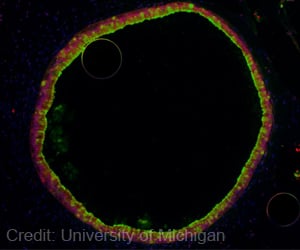H1N1(2009) virus has been detected in free-ranging northern elephant seals off the central California coast a year after the human pandemic began.

UC Davis researchers have been studying flu viruses in wild birds and mammals since 2007 as part of the Centers of Excellence in Influenza Research and Surveillance program funded by National Institutes of Health. The goal of this research is to understand how viruses emerge and move among animals and people.
Between 2009 and 2011, the team of scientists tested nasal swabs from more than 900 marine mammals from 10 different species off the Pacific Coast from Alaska to California. They detected H1N1 infection in two northern elephant seals and antibodies to the virus in an additional 28 elephant seals, indicating more widespread exposure.
Neither infected seal appeared to be ill, indicating marine mammals may be infected without showing clinical signs of illness.
The findings are particularly pertinent to people who handle marine mammals, such as veterinarians and animal rescue and rehabilitation workers, Goldstein said. They are also a reminder of the importance of wearing personal protective gear when working around marine mammals, both to prevent workers' exposure to diseases, as well as top revent the transmission of human diseases to animals.
H1N1 originated in pigs. It emerged in humans in 2009, spreading worldwide as a pandemic. The World Health Organization now considers the H1N1 strain from 2009 to be under control, taking on the behavior of a seasonal virus.
Advertisement
When elephant seals are at sea, they spend most of their time for aging in the northeast Pacific Ocean off the continental shelf,which makes direct contact with humans unlikely, the report said.
Advertisement
The research, led by scientists Goldstein and Walter Boyce at the UCDavis School of Veterinary Medicine's One Health Institute, was conducted with collaborators Nacho Mena and Adolfo Garcia-Sastre atthe Icahn School of Medicine at Mount Sinai in New York, who sequenced the virus isolates and characterized their phenotypic properties.
"The study of influenza virus infections in unusual hosts, such as elephant seals, is likely to provide us with clues to understand the ability of influenza virus to jump from one host to another and initiate pandemics," said Garcia-Sastre, professor of microbiology and director of the Global Health and Emerging Pathogens Institute at the Icahn School of Medicine.
Source-Eurekalert











